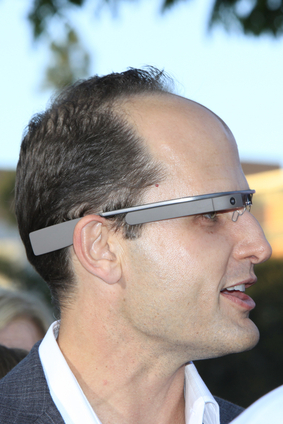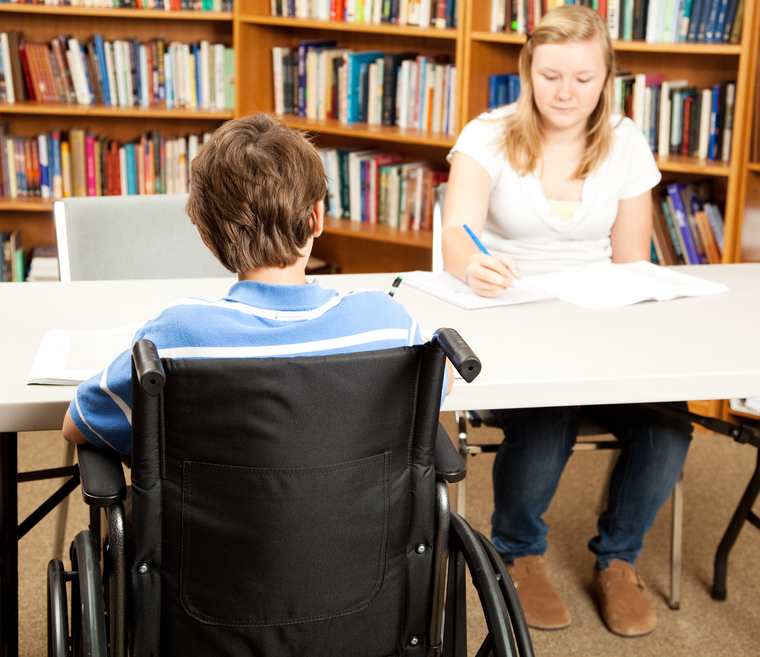What is Assistive Technology?
What is Assistive Technology?
Related Objectives
· Develop awareness of a range of assistive technologies
· Understand the use of assistive technology and its benefits for persons with disabilities
Introduction to Assistive Technology
AT, or assistive technology, is technology that is used to improve accessibility. AT levels the playing field for people with disabilities by facilitating equitable access to information resources, ensuring inclusive instruction, creating a safe environment, and improving communication and academic skills. AT helps students read printed text, use digital media, and participate in library instruction – among other activities commonly performed in libraries.
According to federal legislation in 2004, an assistive technology device is:
"any item, piece of equipment, or product system, whether acquired commercially, modified, or customized, that is used to increase, maintain, or improve functional capabilities of individuals with disabilities."
Some examples of assistive technologies are prosthetics, screen readers, wheelchairs, voice recognition devices, screen magnifiers, talking books, and eye-controlled devices. Some common technologies can become "assistive" by allowing such variations as adjustable font size for people with vision disabilities.
Check out this video (8 min, 21 sec) where Nina Baliga describes why it is important to create accessible technology.
https://www.youtube.com/watch?v=2115c0GL4a8
High-tech and Low-tech: AT for Every Library
AT devices can vary in complexity from very simple, low-tech devices, such as easy grasp pencils and tactile globes, to more complex, higher-tech ones, such as page-turners and text-to-speech software.

Pencils with soft grips are easier for students with physical disabilities to hold onto.
High-tech forms of AT are usually based on existing information technology. An adaptive keyboard is one example. New developments are constantly being created. For example, Google Glass has exciting potential for meeting any number of assistive technology needs all at once. Its hands-free capacity can allow persons with physical disabilities access to electronic resources more easily if they are unable to operate a mouse or trackpad, and the bone-conduction speaker it employs can transmit audio from screen readers, for example, directly to the user's inner ear, maintaining privacy and allowing screen readers to be used in environments where they might otherwise be disruptive.

A man shows how easy it is to wear Google Glass.
With today's fast pace of technology design, it can be challenging to keep up with the latest assistive technology devices and their costs. AT does not have to be "the latest" in technological development to benefit users, however. For instance, built-in features in common software systems like Microsoft Windows and Mac OS provide text-to-speech capability, magnification, and sticky keys and go a long way to support students with a variety of disabilities without requiring the purchase of new resources. For more information about the array of accessibility tools built into all iOs devices alone, click here.
Also, not all AT is electronic or computer-based. Other forms of AT include:
- Desks or tables that adjust to the appropriate height for students who use wheelchairs or who have other mobility impairments.
- A large print map for students with low-vision.
- Student tracking programs to help students with learning disabilities.
- Crayons with built up handles to help students with fine motor disabilities.

A student who uses a wheelchair is able to sit at a table because it has been adjusted to the appropriate height.
Some assistive technologies are inexpensive and easy to implement. Think about some simple assistive technologies that might aid students in your library. Consider adding assistive technology as a consideration to your Action Plan. Librarians have to be creative in finding ways to use the tools they have to meet the needs of their students.
References
Anderson, M. (2009). Get your special education brain in gear. Multimedia & Internet@Schools, 16(3), 37-39.
Ennis-Cole, D., & Smith, D. (2011). assistive technology and autism: Expanding the technology leadership role of the school librarian. School Libraries Worldwide, 17(2), 86-98.
Poole, E. (2013). Innovative literacy programs. Public Libraries, 52(1), 6-7.
Small, R. V. (2013). Survey on assistive technologies in libraries [SurveyMonkey]. Unpublished.
